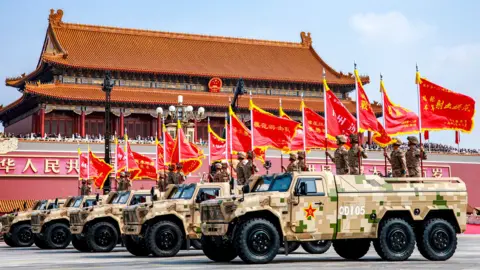The military might of the People's Republic of China was on full display in a parade marking the 80th anniversary of the end of World War Two. Thousands of miles away, at the White House in Washington DC, Donald Trump was paying attention. They were hoping I was watching, and I was watching, he said. The American president didn't detail his thoughts about the massive celebration sprawling across Tiananmen Square, except that it was very, very impressive. The message from China – to Trump and to the world - however, seems fairly clear: there is a new and growing center of power in the world and a new alternative to the American-backed order of the past century.
Trump's remarks during a meeting in the Oval Office—also on that Wednesday—shed little light on the matter. They were the culmination of a typically circuitous series of reflections by the American president on the happenings in China over the past several days. It was a mix of ambivalence, grievance, and concern. Trump downplayed his concerns about the display, mentioning in a Tuesday podcast interview that he was not concerned. However, by Tuesday night, he expressed dissatisfaction that China wasn't acknowledging the U.S. contribution during World War Two on his Truth Social platform.
China's military parade encompassed more than just a show of strength, as it crafted a narrative positioning the communist government as a significant player in defeating fascism and imperialism during World War Two. This narrative suggests Beijing's ambitions to reshape global perceptions and perhaps establish a new world order. It's the first step in a concerted effort to rewrite the rules of the road, remarked Robert Wilkie, reflecting on how nations adjust historical narratives to cement their current positioning in global politics.
Meanwhile, Trump's trade policies, favoring a more protectionist approach, have arguably united former adversaries like China and India as they navigate the repercussions of tariffs imposed by the U.S. His “America first” trade philosophy scrambles not only economic alliances but also geopolitical arrangements, pushing these nations into closer cooperation.
However, Trump's approach is fraught with risks. Legal challenges are emerging against his sweeping tariffs, raising the possibility of a significant alteration to U.S. trade policies in light of judicial scrutiny. This complex interplay of global military displays, shifting alliances, and domestic legal battles illustrates how Trump's high-risk trade strategy may have consequences far-reaching beyond immediate economic considerations.




















